CORPUS CHRISTI, Texas — Though we take advantage of our beaches year-round, Memorial Day weekend is the unofficial start to the summer season. That means more people are headed to cool off at a local beach or a pool, and it is important to keep the dangers in mind so everyone can have a fun time.
Beach flag warning system
The first thing you need to know if headed to the beach are the colors of the warning flags and what they mean.
Green: Indicates conditions are calm and swim with care.
Purple: Indicates a potential presence of venomous marine life such as jellyfish, man-o-war, stingrays, or others.
Orange: Indicates environmental hazard for air and/or water quality. Bacteria count can be high after extreme rain events, high tides, Red Tide may be present, air/water quality may be poor.
Yellow: Indicates calm to moderate conditions to remind swimmers to stay alert. Yellow flag does not assure safe water.
Red: Indicates conditions are determined to be dangerous due to the presence of strong wind, strong current, or large surf. Adult swimmers should stay in water no more than waist deep and non-swimmers and children should be kept along the surf line.

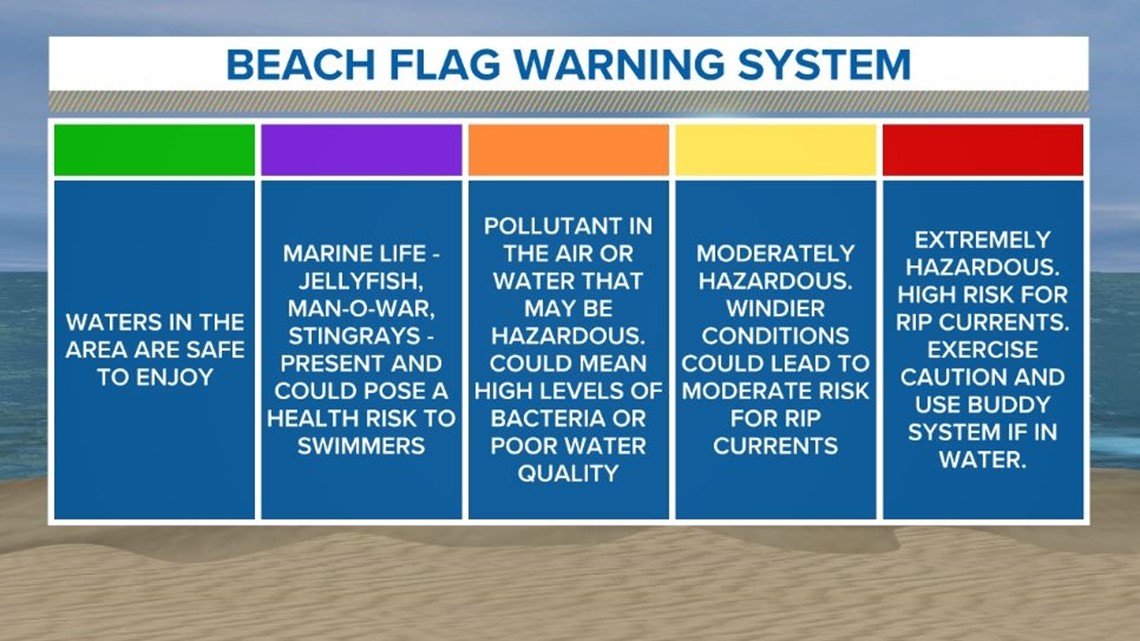
Rip current safety
If there is a red flag flying, it is safest to not get in the water at all. A red flag means conditions are determined to be dangerous due to the presence of strong wind, strong current, or large surf. A rip current can quickly sweep a person out to sea.
Kiwana Denson created the Je'Sani Smith Foundation in honor of her son who was swept away on Padre Island back in April of 2019.
"It is important to remember he was athletic, strong swimmer unfortunately those rip currents are so strong," Sara Carney, VP of Public Relations with the Je'Sani Smith Foundation said.
Carney said that it's important to stay calm when dealing with rip currents.
"If you happen to get caught up in a rip current, what you want to do is float and not fight," she said.
Rip currents are known to happen closer to piers and jetties and can be spotted from afar, often seeing a break in the waves.

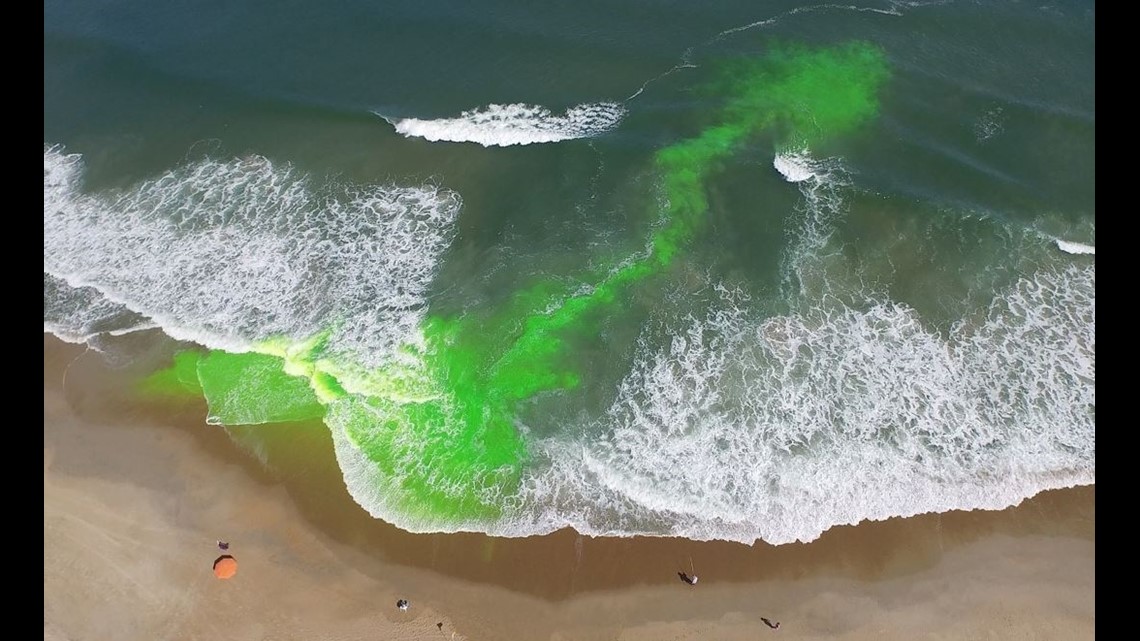
If caught in a current, don't fight it. Float, and when you are able, swim parallel to shore and call for help.
Beach critters
It isn't just the waves that can ruin a good beach day. Venomous sea life-- from Portuguese man o' wars to blue dragons-- have been known to frequent our South Texas beaches. A rattlesnake was even spotted recently near a jetty in Port Aransas. Yikes.
Portuguese man o' war

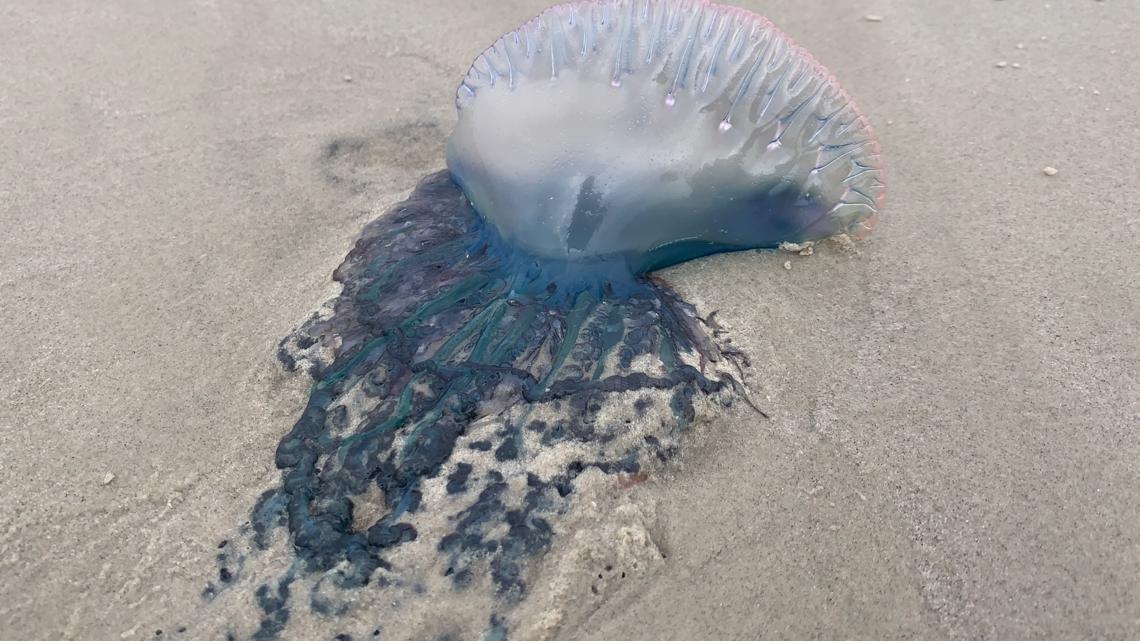
Though they may look harmless when beached, these guys still give a heck of a sting if touched-- even up to weeks after being on shore, NOAA said.
So, what should you use if you are stung? Not vinegar, a local doctor said.
“The Portuguese man o' war sting is gonna be more severe and again if you end up using vinegar on it, it would cause worsening pain as opposed to improvement of your pain,” Emergency Room Doctor Andrew Crutchfield previously told 3NEWS.
When it comes to the Portuguese man o' war, there’s only one thing you can do to lessen the sting and it’s not warm urine, either. Dr. Crutchfield says water will work just fine.
“You wanna stick with warm water immersions, watch it over the next few hours,” Dr. Crutchfield said. “People talk about using urine, there’s no science behind that.”
Blue dragons

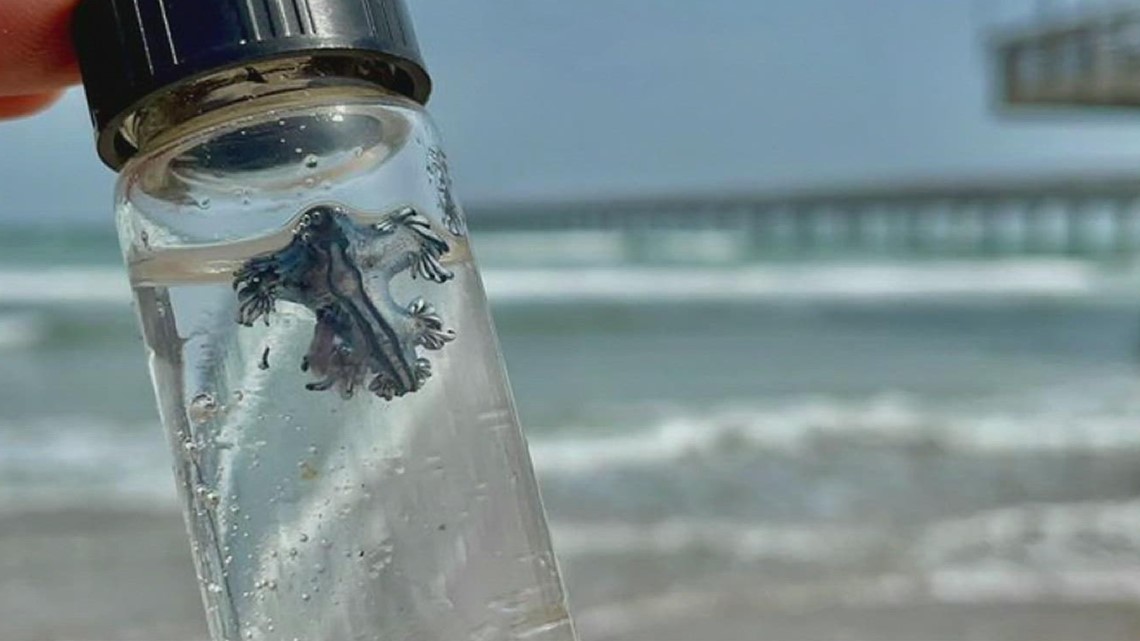
Small, but mighty... the blue dragon. These little guys feast on Portuguese man o' wars and store their stinging cells, making their own stings more powerful.
Their bright blue coloring makes them strangely beautiful but experts warn you should look, but don't touch!
Fast facts about blue dragons:
- While "dragon" might conjure up images of the fire-breathing beasts in "Game of Thrones," these sea slugs are tiny, about the size of a grape.
- Don't let their size fool you though. They are fierce little suckers and their sting can pack a punch. That's because their favorite meal is the Portuguese man-o’-war. The blue dragons ingest, store and concentrate their prey's stinging cells so their own sting is more powerful.
- Symptoms following a sting can include nausea and vomiting, according to American Oceans. If you are stung by a blue dragon, it is best to go to a hospital for treatment, according to Ocean Info.
- The venom remains active even after a blue dragon dies.
Rattlesnakes

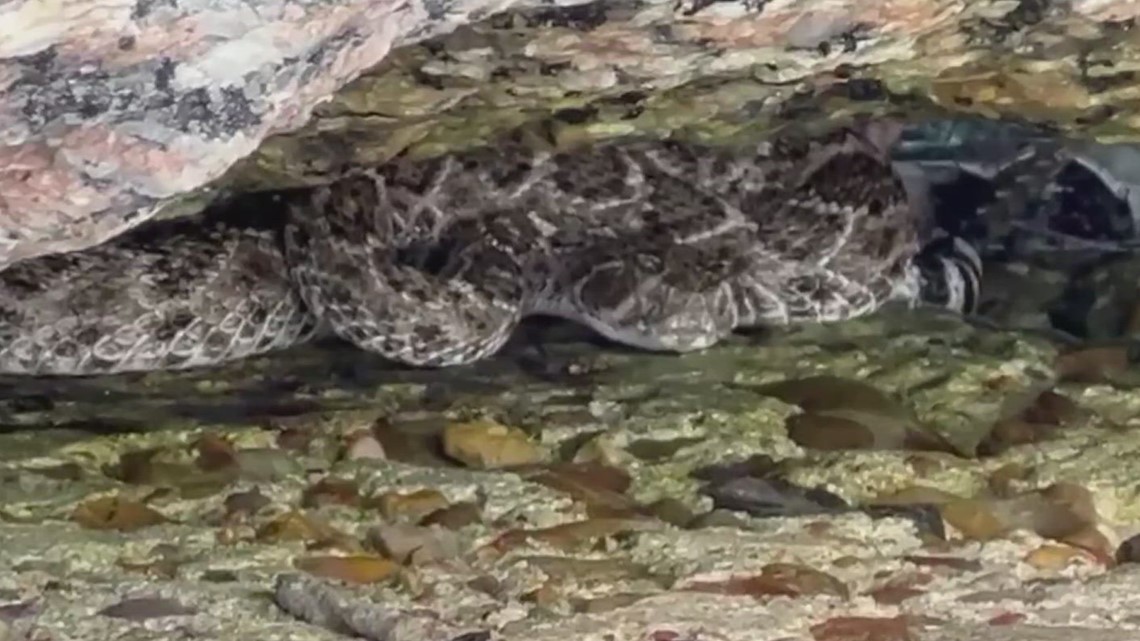
You may not initially think of snakes being a problem on the beach, but our beaches are surrounded by dunes that are home to make different animals. Rattlesnakes are known to hang out there.
Recently, an angler got the surprise of his lifetime when he came across a rattlesnake on a Port Aransas jetty.
"I've heard other people they've seen them right along the sand, never thought I would see one at the jetty," he said.
Keith Kurwicki said that he noticed something move as he dropped some bait in between the rocks. He said the rattlesnake was huge, but it never rattled or tried to strike -- it only stared at him.
South Texas Botanical Garden and Nature Center Director Dr. Michael Womack said it is simply that time of year. Snakes are looking for those cool spots, whether that's out at the beach -- or even in your back yard.
And of course.... sharks.
This 14-foot shark was caught on Padre Island earlier in May... reminding everyone that the majestic creatures are often swimming near beachgoers.

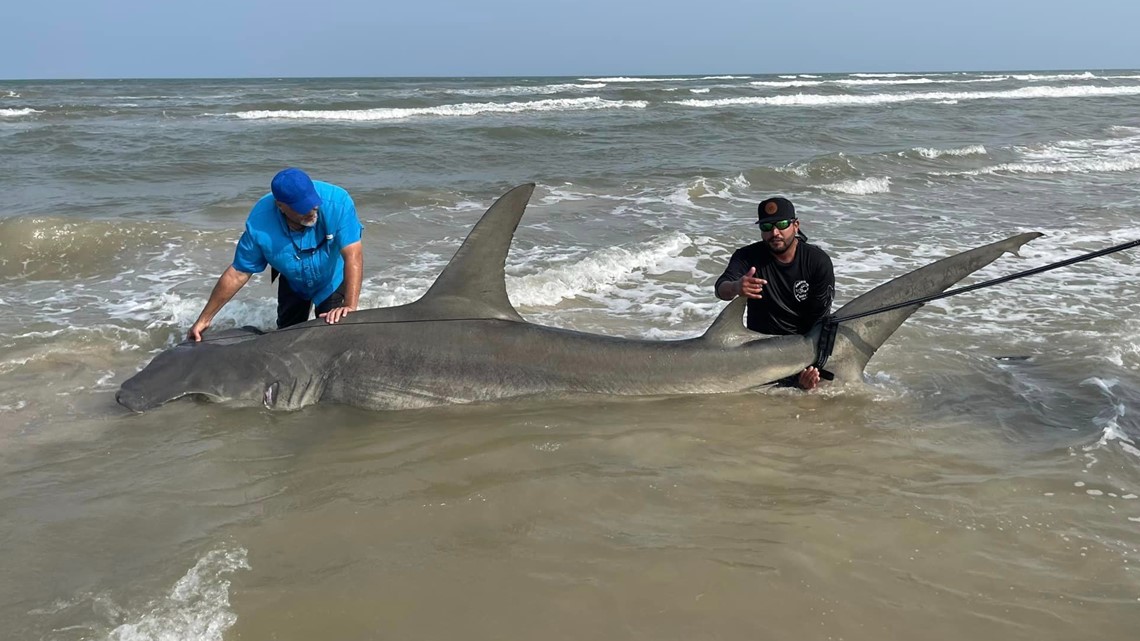
The hammerhead was caught at JP Luby Beach, a popular spot for locals and tourists on Padre Island.
"Texas actually has a really healthy shark population", said Dr. Kesley Banks with the Harte Research Institute at TAMU-CC.
Boat safety
Before you put your boat on the water, make sure the tags are up to date, and don't forget all your safety tools that are supposed to be inside of it. That includes life-jackets, fire extinguishers and first-aid kits.
It is important to know flares have expiration dates and that boats are now required to have a kill switch in case someone happens to fall overboard. The number one life saving tip, experts agree, is to wear your life jacket.
They compare it to wearing a seatbelt in a car.
For those who will be out in kayaks, agencies ask to make sure you have an identifier on it like a name and telephone number. The reason is that if they find a runaway or abandoned vessel, they can call the number and make sure you are okay and won't spend precious time looking for someone in the water.
For a look at all required safety equipment for boats, click here.
Sunscreen, sunscreen, sunscreen!
If you are spending any time outdoors, you must wear sunscreen.
Doctors suggest putting on at least SPF 30 about 15 to 20 minutes before you go outside and reapply often.
A bad burn for some can mean a trip to the emergency room. Wearing a hat or light woven clothing can also help prevent those sunburns.
Pool safety
The beach not your vibe? All of the city's public pools will open this Memorial Day weekend.
Corpus Christi Medical Center said drowning is one of the leading causes of accidental death. 87 percent of accidental drownings happen for kids five and younger in home pools and hot tubs.
One solution to increasing water safety is taking swim lessons, either from parents or qualified instructors. Parents should also always monitor their children around any kind of water.
Corpus Christi Parks and Recreation offers swim lessons for kids and adults. You can find that information here.
Swimsuit color for kids
One national water safety organization is asking parents to stop and think before choosing which swimsuit their child will wear in the water this summer.
Aquatic Safety Connections is an online platform designed to promote water safety tips, tricks and education to people of all ages.
The organization recently shared graphics showing just how important the color of a child's swimsuit can be, in the event of an emergency.

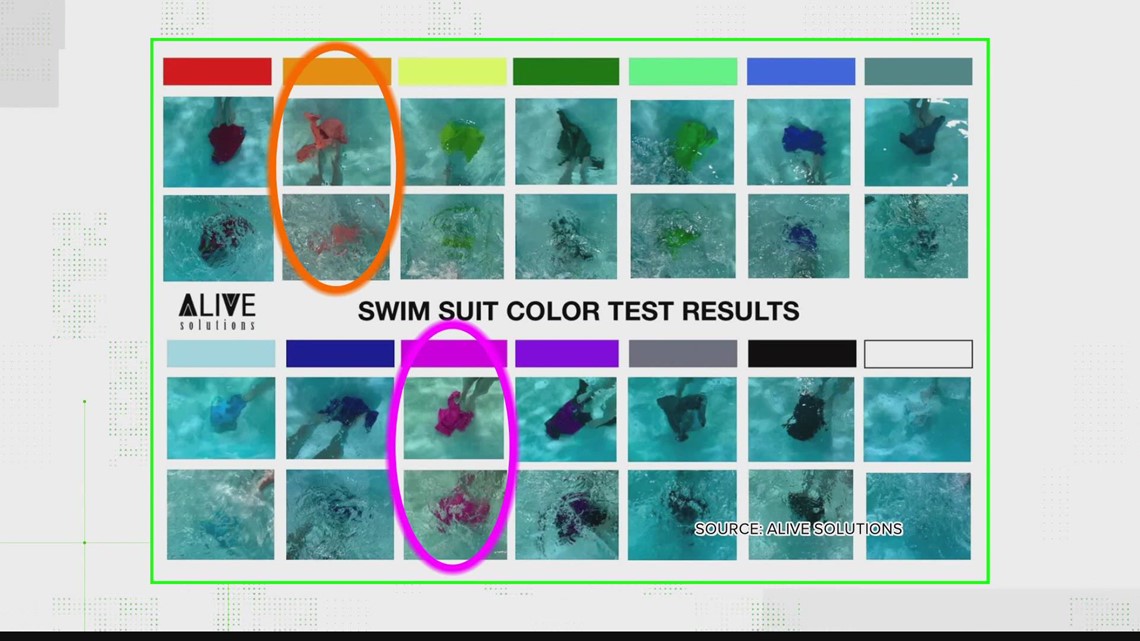
The results show the top testing colors are neon colors, like bright yellow, green and orange.
The worst colors were shades of blue and white. Officials with Aquatic Safety Connection said those colors practically disappear as water gets deeper.
Hydrate!
Heat and humidity will dehydrate you quickly.
"The heat allows a person to sweat a little more and then we can become more dehydrated," Dr. Byron Connor said. "And they're out playing, sometimes there's alcohol involved, and so they're not consuming liquids that are going to be conducive to keeping them hydrated. And then the prolonged exposure is actually probably the greatest risk."
Heat illness is usually the result of overexertion in hot, humid weather- just like ours- and can cause fatigue, muscle cramping or even heat stroke, which can be deadly.
Be sure to drink a lot of water, maybe even a sports drink or two, while out in the summer sun.



